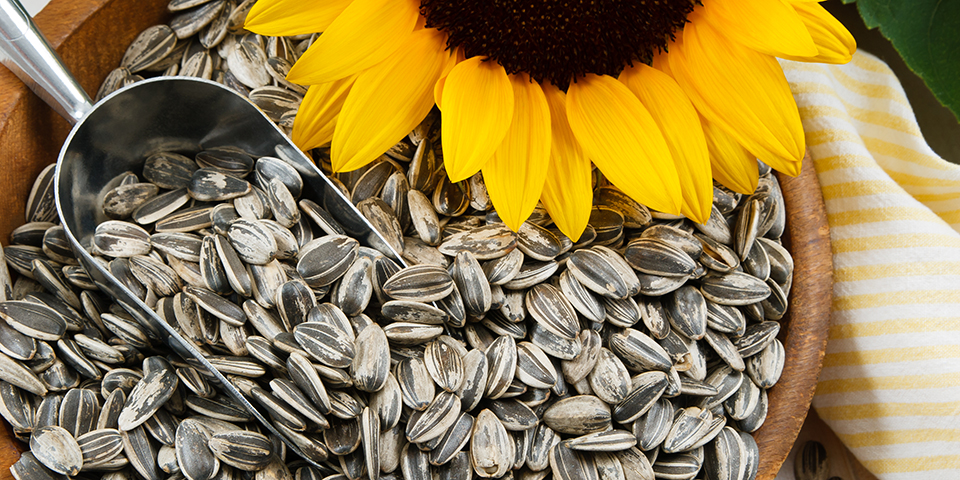If you’d like to learn how to cook eggs, or want to learn some different techniques, let’s get crackin’!
We’re here to share easy tips to help culinary beginners take each egg dish to the next level.
Quick-cooking eggs are the perfect protein source to start your day in a sunny way.
Everyone has an opinion on how to cook eggs, but at the end of the day, a “perfect” egg is one that’s cooked the way you like it.
Below, Holly McKee-Clark, culinary specialist for Beachbody, shares her favorite tips for how to cook eggs in five different, delicious ways.
1. How to Cook Fried Eggs
Fried eggs are a tantalizing topper for avocado toast, burgers, potato hash, or spring mix salads.
According to McKee-Clark, “The biggest factor for success in fried eggs is having the right tools: a truly nonstick skillet and a silicone flipping spatula. If your egg sticks to your pan or the tool you’re using doesn’t slide easily under the edge of your egg, you’re toast.”
To fry an egg, start by heating a nonstick skillet over medium-high heat; lightly coat it with cooking spray.
Crack in your egg and follow the cooking instructions below to get the egg done just right:
- Sunny-side up: Cook until whites slightly set, about 3 minutes. Your yolk should remain uncooked and yellow like the morning sun. Runny yolks are great for dipping toast!
- Over-easy: Cook until whites are set, about 3 minutes. Flip over and cook for another 1 minute, allowing the yolk to slightly set.
- Over-hard: Cook until whites are set, about 3 minutes. Flip over and cook for another 2 minutes, allowing the yolk to cook fully.
Pro tip: Love lacy, crispy edges on fried eggs? Make sure the oil is hot before cracking in the egg.
You can also use slightly higher heat. Sprinkle a little water in the skillet, and if it pops and skitters around, your skillet is ready for your egg.
Trend alert: Try the TikTok #Eggvelope where you separate and fry a thin of egg white, only to use it as an envelope to fold and cook a lone yolk.
Now, that’s a package worth delivering straight to your belly!
2. How to Cook Scrambled Eggs
Fluffy, moist scrambled eggs are a treat any time of day! Enjoy them with a classic side of potatoes and bacon.
Later, slide leftover scrambled eggs into a breakfast burrito or fried rice dish, ensuring none of it goes to waste.
To make scrambled eggs:
- Whisk 4 eggs with salt, pepper, and a tablespoon of milk.
- Heat a nonstick skillet over medium-low heat; lightly coat with cooking spray.
- Pour in eggs and let them sit until the outer edges start to set. Use a spatula to pull the edges toward the center, allowing any uncooked egg liquid to flow out onto the pan.
- Repeat until you have a moist, fluffy pile of scrambled eggs! Break them into smaller chunks, and enjoy.
Pro tip: McKee-Clark recommends, “Soft cheeses like goat’s milk or blue cheese crumble can lend a rich creaminess. Just keep in mind that a couple of teaspoons go a long way. I add them just after pouring the eggs into the skillet. Then, I love topping my scrambled eggs at the end with whatever fresh herbs might be in the fridge (e.g., oregano, thyme, chives, green onions).”
Trend alert: Aussie folded eggs feature an egg rosette atop crunchy bread. And, you can make it with two minor tweaks: 1) use milk instead of cream, and 2) when the outer edges are set, move your spatula in a circular motion starting from the outside in toward the center like you’re drawing a spiral.
3. How to Make an Egg Omelet
Omelets are scrambled eggs that haven’t been mixed and moved. Personalize them with your favorite fillings like mushrooms, tomatoes, onions, peppers, spinach, sausage, and ham.
To make an omelet, cook your filling first. This helps them brown, develop flavor and dehydrate before going into your omelet. Set aside, then:
- Whisk 4 eggs with salt, pepper, and a tablespoon of milk or water.
- Heat a nonstick skillet over medium-low heat; lightly coat with cooking spray.
- Pour in eggs and evenly sprinkle on the filling. Let them sit until the outer edges start to set. Use a spatula to pull the edges toward the center, letting any uncooked egg liquid flow out onto the pan.
- Repeat until there’s no liquid left. Fold the omelet in half to plate and enjoy.
Trend alert: Korean tornado egg omelets are all the rage on social media. Use two chopsticks to pinch and swirl the egg mixture toward the center of the pan. The result is an awesome, mounded egg vortex. Downside: You may need a lot of practice!
4. How to Cook Poached Eggs
Tender, gooey poached eggs are a must for classic eggs benedict but can also be enjoyed in a comforting bowl of ramen or atop sauteed greens.
To make poached eggs, start with fresh eggs, which have firmer egg whites that don’t leave a wispy mess when you poach.
Only have old eggs?
Crack them into a fine-mesh sieve to strain egg white that’s too watery. Then, follow these steps:
- Add at least 5 inches of water and 1-2 teaspoons of vinegar to a pot. Bring water to a boil, and reduce the heat, so the water slowly simmers.
- Carefully drop your egg into the water, letting it congeal before you add the next egg. Don’t add too many, or you’ll have trouble keeping track of cooking time.
- Cook each egg for 3 minutes to get firm whites and a liquid yolk. Let it cook for 30 seconds longer if you prefer a firmer yolk.
5. How to Cook Boiled Eggs
How do you boil an egg? It depends on if you like them soft-boiled or hard-boiled.
The more done you like your eggs, the longer they need to sit in hot water. Says McKee-Clark, “Soft-boiled are my favorite, so I can dip my toast into the runny yolk, and there’s no need for any added oil.”
To make boiled eggs, add your eggs to a pot and cover them with at least an inch of water. Then, follow these steps:
- Bring the pot to a powerful rolling boil on high heat.
- Turn off the heat and immediately cover the pot.
- If you like soft-boiled eggs, let the eggs sit for 5 minutes, then drain, crack and enjoy!
- If you want hard-boiled eggs, let the eggs sit for 10 minutes, then drain, crack and enjoy!
Pro tip: McKee-Clark gives us a reason to appreciate old eggs for once: “Using week-old eggs is always the best bet for getting that perfect, under-the-membrane peel when you make boiled eggs.”






